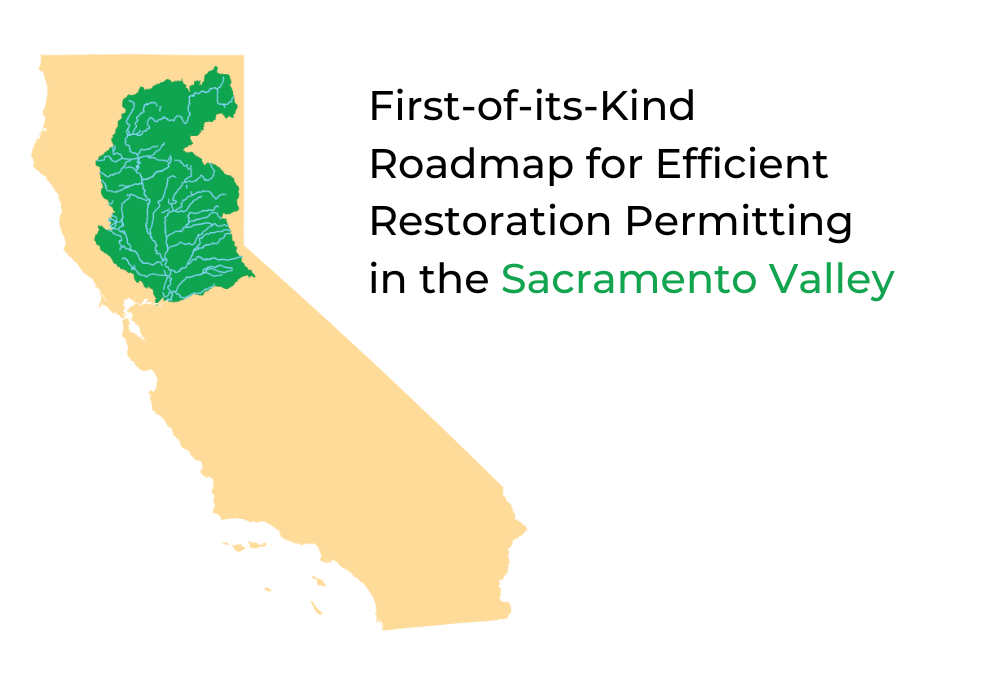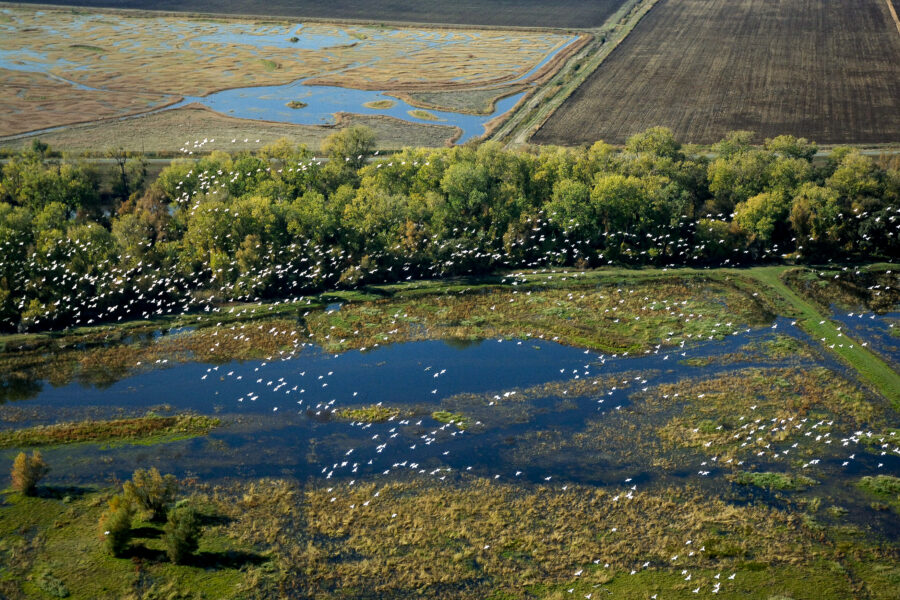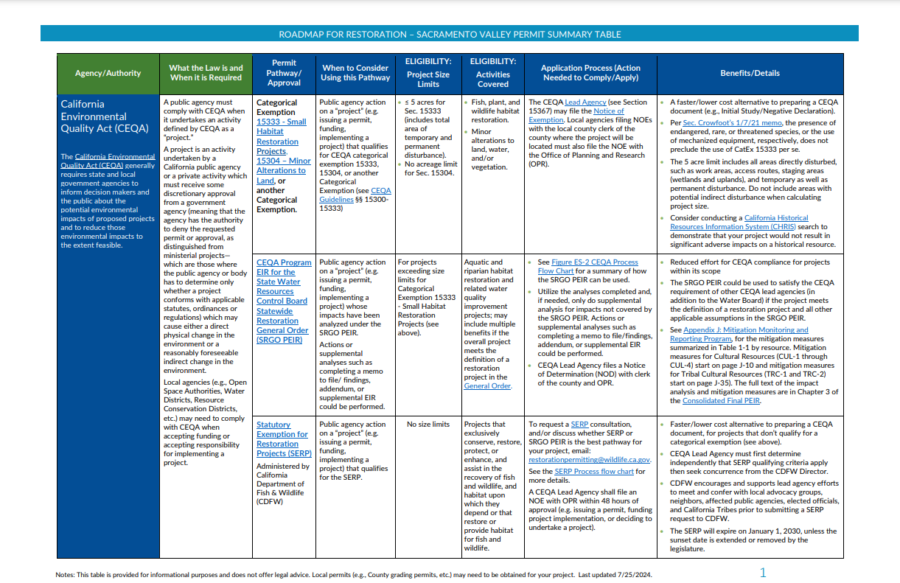
We’d like to introduce Sustainable Conservation’s new web tool for restoration practitioners in the Sacramento River Basin. This resource was made possible thanks to the time and insights of the approximately 80 individuals interviewed across 39 organizations, as well as the agency staff and experts who provided critical reviews of the roadmap resources.
Our Current Landscape
California is at the threshold of a transformative era for landscape-level restoration. The potential impact of the Bipartisan Infrastructure Law and Inflation Reduction Act, along with the promising prospect of a new California Climate bond (Proposition 4), is set to significantly boost project funding. This, coupled with restoration project portfolios like those of the Floodplain Forward Coalition, whose member organizations have planned projects with an estimated need approaching $1 billion for restoration actions benefiting over ½ million acres–the size of 2 Los Angeleses–presents a once-in-a-generation opportunity. Restoration practitioners and regulators must prepare to manage a growing volume of projects to make the most of this moment.
For decades, government agencies, NGOs, and restoration project proponents have worked to refine California’s regulatory and permitting systems to better support habitat restoration. When relying on traditional regulation, some restoration projects use up to one-third of their public funding for planning and permitting. One of the solutions is accelerated permitting pathways—specialized regulatory tools designed to expedite the approval process for habitat restoration projects. Their goal is to ensure environmental protection while enabling timely and effective ecological restoration.
Significant progress has been made in developing these regulatory tools, resulting in more options for project proponents to consider. To date, these pathways have saved millions of dollars and countless hours for regulators and project proponents. But understanding how each pathway works, what it can be used for, and how it works with other pathways is essential for their uptake and effective use. While organizations have developed permitting guidance documents for some regions of California and the existing Accelerating Restoration website compiles information about agencies and permitting pathways, there had previously been no roadmap focused on the Sacramento River Basin demonstrating how to seek restoration project permits, take advantage of new restoration-specific pathways, and understand the links between different permitting processes.
The Roadmap for Restoration

To meet the urgent need for timely and cost-effective ecological restoration, the Roadmap for Restoration is the first resource to provide step-by-step guidance and tips on permitting tools available for restoration project permitting in the Sacramento Valley.
While the Roadmap focuses on the Sacramento Valley, many elements can be applied to projects statewide. In partnership with the Floodplain Forward Coalition, the project aims to support more restoration on the ground at less cost and in less time for everyone involved.
The Accelerating Restoration team engaged with 39 organizations and approximately 80 individuals across environmental consulting firms, nonprofits, regulators, California Tribes, landowners, agriculture, and networks/associations in interviews and briefings to understand the current restoration permitting landscape. With our institutional knowledge and their invaluable insights, the roadmap provides three new resources designed to help take advantage of the progress made with programmatic and other restoration-specific permitting processes:
1
Permit like the Pros
This simplified step-by-step guide outlines best practices for efficiently planning and implementing a restoration project while using restoration-specific permitting pathways where possible.
2
Process Flow Chart
This detailed decision-making flowchart guides restoration practitioners to which permits may be needed and where efficient pathways for compliance could potentially be used.
3
Permit Summary Table
This permit summary table provides information on different agencies, permits you may need, efficient pathways, and resources/tips for using them effectively.

Screenshot of the Permit Summary Table from the Restoration Roadmap
With this new tool, we hope to further enable the use of restoration pathways to help the state achieve its restoration goals for a more resilient future.
The web page and associated materials were developed through a contract with the Northern California Water Association, funded by a U.S. Bureau of Reclamation Cooperative Agreement administered by Reclamation District 108. The web tools also received review from the following organizations: Alnus Ecological, California Department of Fish and Wildlife, California Trout, Central Valley Flood Protection Board, Central Valley Regional Water Quality Control Board, Delta Stewardship Council, Ducks Unlimited, Environmental Science Associates, State Water Resources Control Board, Kjeldsen, Sinnock & Neudeck, Inc., U.S. Army Corps of Engineers, and the U.S. Fish and Wildlife Service.
